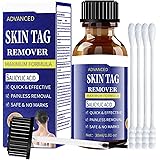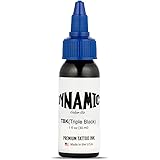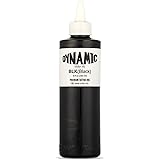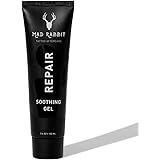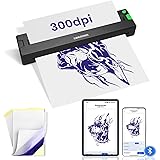Embarking on the journey into the tattooing industry or simply picking up a new hobby can be an exhilarating experience, yet it often presents a significant hurdle: selecting the perfect tattoo machine. For those just starting out, the sheer volume of options and conflicting advice found online may seem overwhelming. This detailed guide, building upon the insights shared in the accompanying video, is designed to demystify the choices available, helping aspiring artists make an informed decision about their first tattoo machine.
The quest for a suitable beginner tattoo machine requires an understanding of the fundamental types on the market. Historically, tattooing was primarily performed with coil machines, which laid the groundwork for modern techniques. However, technological advancements have introduced rotary machines and the more contemporary pen-style devices, each with its unique operational principles and advantages. A thorough examination of these machines is crucial for any novice looking to invest wisely in their initial equipment.
Understanding the Mechanics of Tattoo Machines
Before any commitment is made, a foundational knowledge of how each machine operates can prove invaluable. Tattoo machines are generally categorized by their driving mechanism, which directly influences their performance characteristics. Different methods of needle propulsion affect factors such as skin trauma, ink saturation, and the overall feel for the artist. These distinctions are not merely technical specifications; they profoundly impact the learning curve and the quality of work produced.
Coil Tattoo Machines: The Traditional Mainstay
Coil machines are considered the classic choice, operating through an electromagnetic circuit. Two coils, positioned within the machine body, create a magnetic push and pull force when an electric current is applied. This magnetic action causes an armature bar to move rapidly up and down, consequently driving the needle into and out of the skin. The distinct buzzing sound associated with tattooing is a hallmark of these robust machines, signaling their powerful and consistent operation.
For beginners, the inherent characteristics of a coil machine often present significant learning advantages. The substantial weight and pronounced vibration of these devices are thought to help artists develop a more stable and dexterous hand over time. This tactile feedback is invaluable for mastering line work and shading, as the resistance encountered provides critical sensory input during the tattooing process. Many seasoned professionals credit coil machines with forging their foundational skills, emphasizing the muscle memory and control developed through their use.
Furthermore, coil machines typically utilize traditional needles, which are generally more affordable than modern cartridge systems. This cost-effectiveness can be a considerable benefit for those on a strict budget, allowing for more practice without excessive expenditure. While two separate coil machines are often needed—one for lining and another for shading—the individual units themselves can be quite durable, with some reported to last decades. Entry-level coil machines, such as those from Dragonhawk, can be found for approximately 2,000 Philippine pesos each, offering an accessible starting point.
Rotary Tattoo Machines: The Modern Evolution
Rotary machines represent a significant departure from coil technology, employing a small electric motor to drive the needle. This motor’s continuous rotational motion is converted into a linear up-and-down movement for the needle, providing a smoother and quieter operation. The design simplicity of rotaries allows for a more compact and lightweight build, which can reduce hand fatigue during extended tattooing sessions. Their versatility in handling both lining and shading tasks with a single machine is frequently highlighted as a major advantage.
Direct Drive Rotary Machines
A direct drive rotary machine is characterized by the motor directly driving the needle bar, often through a spinning cam wheel. This direct connection results in a consistent and powerful hit, making these machines highly efficient. The stroke, which denotes the distance the needle travels and the force with which it penetrates the skin, can often be adjusted on these models, ranging from a gentle 1.5mm to a robust 5mm. This adjustability allows artists to fine-tune the machine’s performance for different techniques and skin types, offering significant flexibility.
Many beginners are drawn to direct drive rotaries due to their “all-in-one” functionality and competitive pricing. Machines like the Dragonhawk Extreme 2, mentioned in the video, are a popular choice, typically retailing around 3,500 Philippine pesos or $45-$50 USD online. These machines are generally considered reliable and capable of producing quality work, making them a practical consideration for a first tattoo machine. Power connections, whether RCA or clip cord, are largely a matter of personal preference, with minimal impact on performance for most users.
Linear Drive Rotary Machines
Linear drive rotaries incorporate a sliding bar mechanism to translate the motor’s rotary motion into linear needle movement. This design aims to mimic the feel of a coil machine’s hit more closely, offering a distinct experience compared to direct drives. While also capable of versatile performance, the specific feel and response of a linear drive can appeal to artists who appreciate a particular type of give or resistance in their machine. The choice between linear and direct drives often comes down to individual tactile preference.
Swash Plate Rotary Machines
Less common but notable are swash plate rotary machines, which feature a unique eccentric mechanism that allows for a different kind of “hit” or feel. The motion of the needle is described as more akin to a back-and-forth oscillation rather than a purely linear stroke. Artists using swash plate designs are often able to control the amount of give or impact the machine delivers to the skin. While they offer a distinctive operational style, they may be less intuitive for absolute beginners to master effectively.
Pen-Type Tattoo Machines: The Contemporary Standard
Pen-type machines represent the pinnacle of ergonomic design in modern tattooing equipment. These machines are essentially compact rotary devices encased in a pen-like form factor, providing a comfortable and natural grip similar to holding a writing instrument. Their sleek design, combined with their quiet operation, has made them increasingly popular among professional artists seeking precision and reduced hand strain. The integrated motor typically delivers a consistent and smooth performance, ideal for intricate detailing and consistent color packing.
However, for a beginner, pen-type machines come with notable considerations, primarily concerning cost and the type of consumables they require. These machines exclusively use tattoo cartridges, which are significantly more expensive per unit than traditional needles. While cartridges offer convenience and hygiene benefits, the ongoing expense can quickly accumulate, especially during the initial learning phase where many needles might be used for practice. Entry-level wired pen machines often start at 6,500-8,000 Philippine pesos, with wireless variants being considerably pricier, placing them at the higher end of a beginner’s budget.
Making the Definitive Choice: Your First Tattoo Machine
The decision regarding your first tattoo machine should ideally balance budget constraints with your long-term learning objectives. Each machine type offers a distinct pathway into the art of tattooing, with particular strengths and weaknesses for the novice. It is often emphasized that the initial equipment should facilitate skill development, rather than merely offering convenience or advanced features that might be better appreciated by experienced practitioners.
For those committed to building a strong foundation and developing exceptional hand stability, the coil machine is frequently recommended. Its weight and vibration provide invaluable feedback that contributes to a robust tattooing hand and precise line work. While requiring two machines for complete versatility (liner and shader) and being significantly louder, the lessons learned from coils are considered by many to be fundamental. The ability to use more affordable traditional needles also makes the learning process more sustainable economically.
Conversely, if immediate versatility, a quieter operation, and a single-machine solution are priorities, a direct drive rotary machine presents a compelling option. Its capacity to perform both lining and shading tasks, coupled with its lighter weight and lower noise profile, makes it an attractive choice for many. The adjustable stroke feature further enhances its utility, allowing for adaptability across various tattooing styles. The relative affordability of a quality direct drive rotary positions it as a strong contender for the budget-conscious beginner.
Ultimately, the selection of a beginner tattoo machine is a personal one, reflective of an individual’s learning style and financial capacity. While the allure of advanced, quiet, and ergonomic pen-type machines is strong, their higher cost and reliance on expensive cartridges can be prohibitive for someone just starting. Many veteran artists advocate for starting with a coil machine to truly grasp the nuances of the craft, believing that the foundational skills acquired through traditional means will serve an artist well throughout their entire career. It is worth noting that a solid understanding of machine mechanics and proper technique with a foundational machine will undoubtedly lead to greater proficiency regardless of the device chosen.


